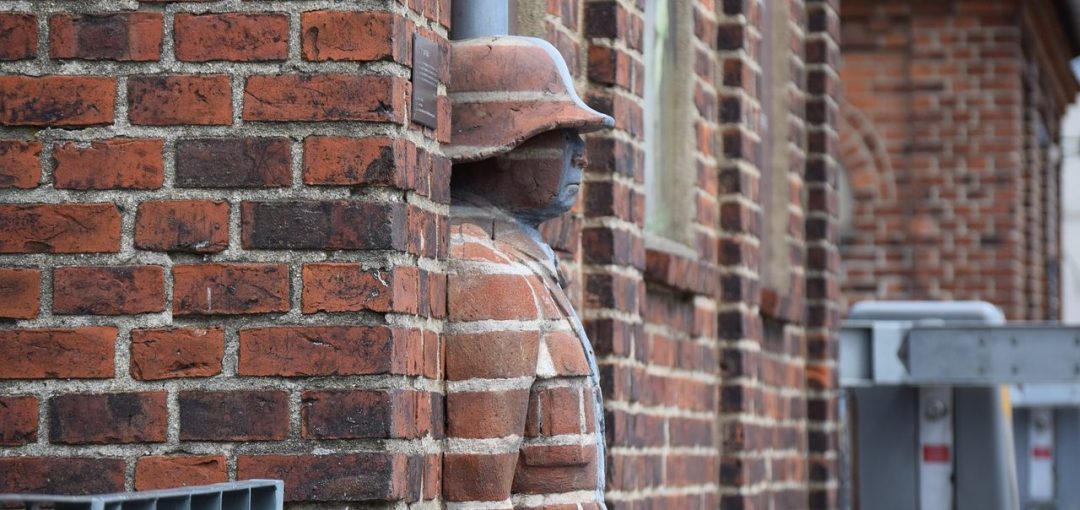Camouflage, illusion or cloaking devices, once deeply rooted in science-fiction, have the ability to make an object appear “invisible”.
Many traditional camouflage or illusion metamaterial devices produce a camouflage external to the actual device, as if the internal object is “not present” or appear as “something else”. While this method of illusion is suitable for some applications, it has it limitations.

Figure 1. Schematic operation of illusion thermotics. a) Reference temperature. The signature shows a “red man” (the real heat source) at the center of the temperature field without an illusion device. b) Current practice of exterior illusion. In a conventional illusion device, the “red man” is expected to move to the location of the “blue man” (the virtual heat source) while maintaining the exterior temperature (red line and blue line overlap). From the exterior temperature, one may not be aware of the interior action of moving, which is the desired consequence for conventional illusion device. However, we may still observe the maximum temperature is at the “red man” and locate the target (maximum temperature) from the temperature field. c) Exterior illusion cum interior splitting. The “red man” is split into four and located at four different places while the exterior temperature is still maintained simultaneously (red line and blue line overlap). It then becomes difficult to locate the real target from the temperature curve compared with (b). The interior temperature will mislead us to locate the real target in terms of location, shape, rotation, and number. The shadow area denotes the device region.
State-of-the-art thermal illusion techniques achieve the exact same external thermal signature as the reference. See explanation in Figure. Unfortunately, using an infrared camera the maximum temperature location can easily be found.
Current illusion techniques cannot change the number of heat signals, nor achieve both internal and external illusions at the same time.
Researchers, Professor Xiaobing Luo and Professor Cheng-Wei Qiu state that, “We have made a thermal illusion device, with split multi-location illusions for enhanced camouflaging and deceptiveness in infrared detection.”
Their technique identically mimics the external thermal behavior of an equivalent reference and splits the interior original heat source into various virtual signals sitting in various locations, see Part c) of the Figure.
A general strategy to design such advanced thermal illusion meta-devices is proposed to manipulate the thermal conduction, and empower robust simultaneous functions of moving, shaping, rotating, and splitting heat sources of arbitrary cross sections.
The temperature profile inside the meta-device can misrepresent the real location, shape, size and number of the actual heat sources, while the profile on the outside can maintain the perfect camouflage.
Since split illusion signatures with similar or equivalent temperature to the reference/original target can occur, it is difficult to identify the real target among the illusion signatures, resulting in the enhancement of the deceptiveness.
The next challenge is to create more separated thermal illusions to make the illusion performance better and more deceptive and misleading.

















